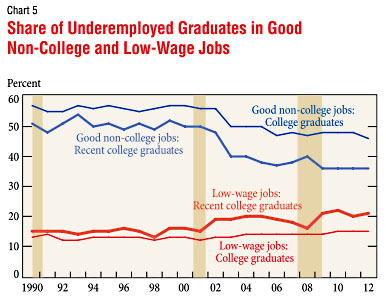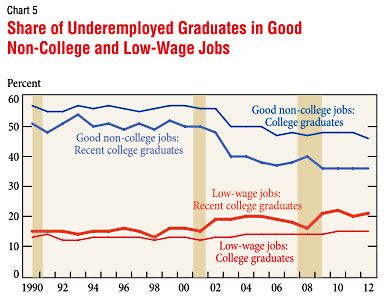
A new report from the New York Fed offers a grim take on the job prospects of recent college grads. It finds that underemployment (i.e., working at a job that doesn’t require a college degree) has averaged around 40 percent for the past two decades, going down a  bit during economic expansions and up a bit during recessions.
bit during economic expansions and up a bit during recessions.
But if the rate of underemployment itself hasn’t changed very much, the nature of underemployment sure has. It’s gotten worse. Take a look at the thick lines in the chart on the right. They show what happens to recent college grads who can’t get college-level jobs. The number who get good non-college jobs has plummeted from 50 percent to 35 percent. The number in low-wage jobs has risen from 15 percent to 20 percent. And needless to say, these grads also have quite a bit more student loan debt than grads from the early 90s.
Getting a college degree is still worth it. But there’s not much question that today’s college grads have it tougher than previous generations did. And the 40 percent who don’t find good jobs have it the toughest of all.















